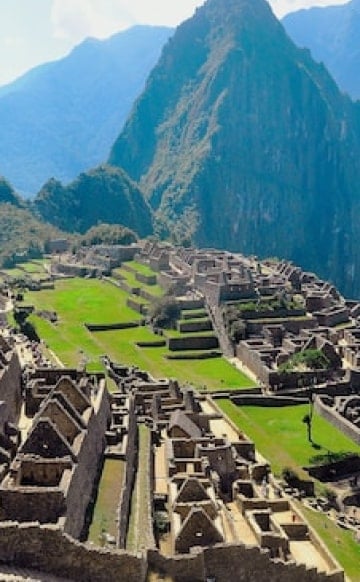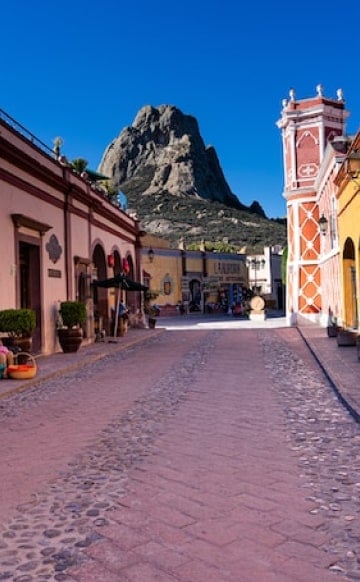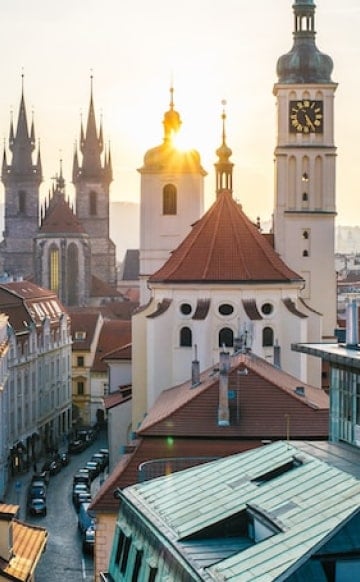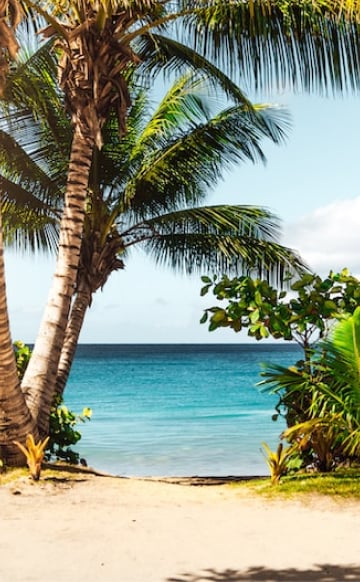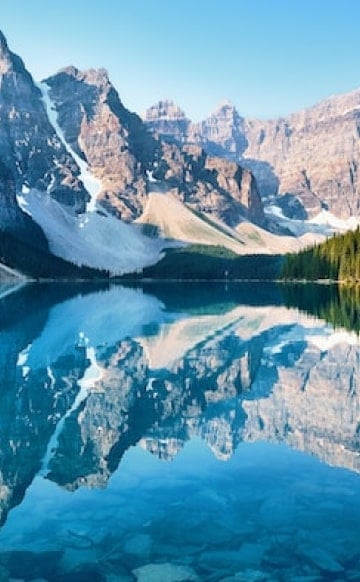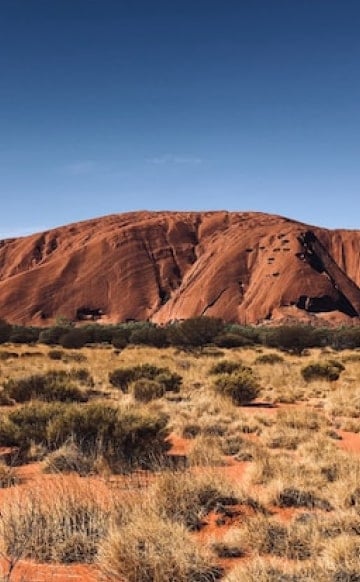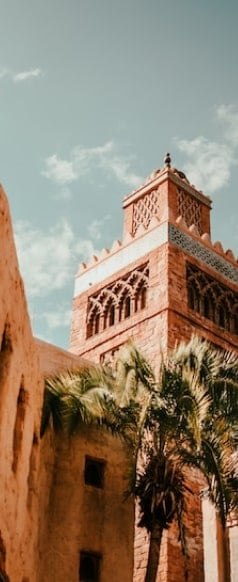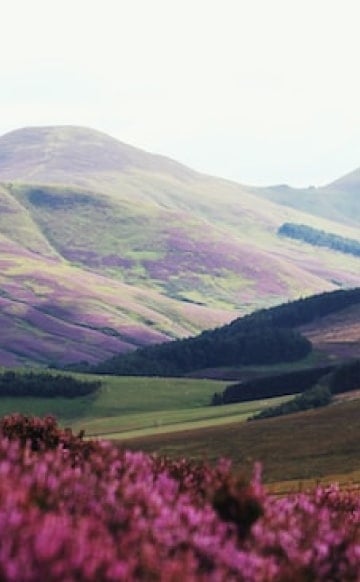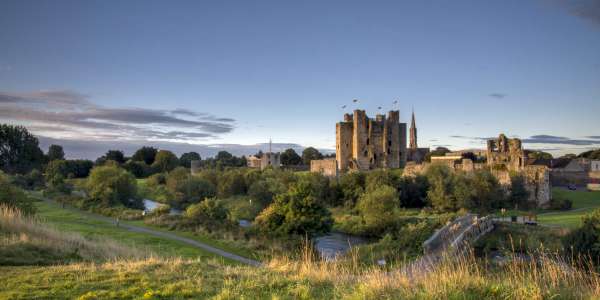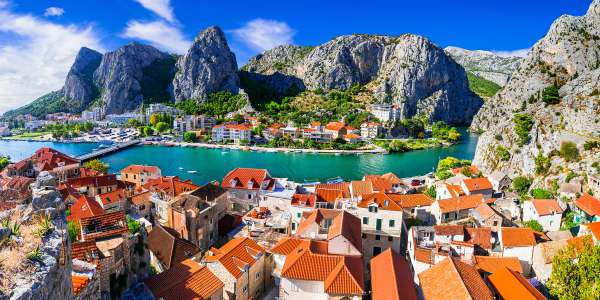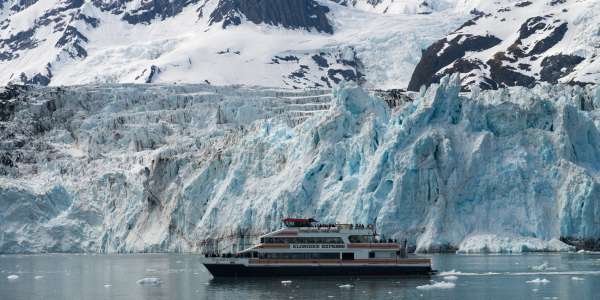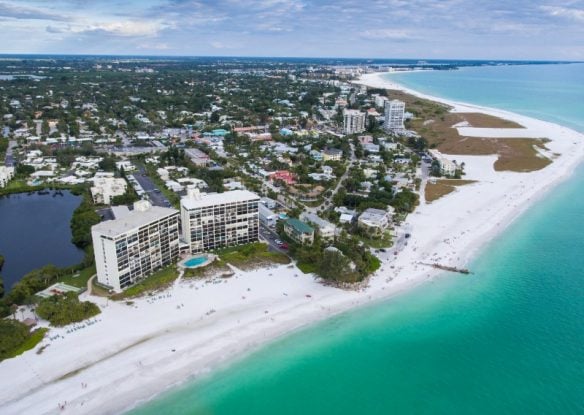There’s something especially exciting about a mystery, and the world is filled with them, from Easter Island to Stonehenge and the Great Pyramid of Giza. If you like a good mystery, these destinations are some of the best for exploring them.

Ancient City of Petra, Jordan
The ancient City of Petra is located in the region known as “Ma’an” in Jordan. The lost city that was believed to have been built in the first century BC, is a majestic place that still holds hidden secrets waiting to be unveiled. It was re-discovered in 1812 by Swiss explorer Johann Ludwig Burckhardt, who’d spent many years studying Arabic and the history of Islam. Archaeological excavations in the area have shown that the area was first occupied more than 9000 years ago. The city is made up of hundreds of tombs, houses, a theater that could fit more than 3000 people, temples, obelisks and altars where animals were sacrificed to calm angry gods or ask for favors.
To enter the city, you must pass through the narrow Siq Valley, with walls towering on each side and the massive pillars gradually rising into view. The first thing you’ll see is the carved Treasury, though some scholars believe that it’s actually a ceremonial tomb. Just 15% of the city has yet been uncovered, the other 85% remaining untouched underground.

Area 51, Nevada
While many of the theories of Area 51, a remote facility used by the United States Air Force, have been debunked, the hotbed of rumors and conspiracy theories remain, mostly relating to UFO sightings. The intense level of secrecy surrounding the research relating to Area 51, coupled with its very remote location in Nevada and close proximity to the “Extraterrestrial Highway” has resulted in a deeply suspicious public that still wonders what’s really going on behind its gates.
If you want to explore it, head to the quirky town of Rachel, which happens to be home to multiple alien enthusiasts. Stop in at Little A’Le’Inn, a restaurant/hotel/gift shop, and you’re bound to hear a few interesting tales, like the woman who saw mysterious red lights appear in the sky before they suddenly transformed into a five-point star. After watching for hours, the star eventually exploded into thousands of little lights.

The Loch Ness Monster, Scotland
On December 6, 1933, the Daily Expressempublished a photo of a “monster” that was apparently lurking in Scotland’s Loch Ness. Since then, there have been police investigations, scientific studies, calls of a hoax and countless reported sightings of a “creature” swimming within the depths of the loch’s dark waters. Described as having a long serpentine neck, “Nessie,” as locals call her, has been theorized to be the last in a long line of surviving plesiosaurs, but no solid evidence to verify this has ever been uncovered. Many visitors to Scotland head to its most famous loch to try to catch a glimpse of the notorious monster, but if you don’t manage to spot her, you can always explore Urquhart Castle, once one of the country’s largest. While only the ruins of this medieval fortress remain, you can enjoy gorgeous views from the site of the iconic loch, while still keeping an eye out for Nessie.

Nazca Lines, Peru
Located in southern Peru on an isolated, arid plateau less than 200 miles from the capital city of Lima, these massive ground drawings measure as much as 660 feet. Just why they exist is unknown, but the precise artwork in the more than 70 “Nazca lines,” includes detailed animals like monkeys, fish, birds and llamas. And, most of them can only be seen while flying above in a plane, or from observation towers. The Nazca culture is believed to have created them by removing red stones that covered the ground, leaving the white earth beneath visible. The question is, how did this primitive civilization achieve such a feat on such a grand scale when they had no way of viewing them from above?

Sattva Sanctuary - Trout Lake, Washington
Sattva Sanctuary is a compound that sits at the base of Mount Adams near the town of Trout Lake in the southern Washington Cascades. Said to be a “hotbed of UFO activity,” the retreat owned by the founder of Enlightened Contact with Extra-Terrestrial Intelligence and the Self-Mastery Earth Institute has hosted seekers for nearly three decades. Few of the countless visitors, including many prominent scientists, leave disappointed. There have been an astounding number of UFO eyewitness accounts, including sounds, documented sightings and, allegedly, even contact of the third kind. Possibly no coincidence, it was near Mount Adams in 1947 that pilot Kenneth Arnold saw a UFO and coined the term “flying saucer.” The public is welcome to visit the ranch and conduct its own sky watches Monday through Thursday.

Mel's Hole - Manastash Ridge, Washington
The former property of Mel Water’s near Ellensburg, Washington, is home to a nine-foot-wide bottomless hole and a former dumpsite. While it doesn’t sound like much, it’s said to have an ability to “reanimate” dead animals. No one knows where the hole leads, and some speculate that it’s actually a tunnel, with a belief in the “Hollow Earth” theory originally proposed by astronomer Edmond Halley in the 17th century. Waters reported sinking a fishing line 15 miles into the hole in an attempt to find out where it leads, but he never did. Other claims include seeing black rays shooting out of the abyss and a dead dog being tossed into the hole somehow returning to life from out of the woods. But the mystery remains, there is no one really knows what it is, though some think that it’s a blowhole for Mount Rainier, located about 100 miles west of Manastash Ridge.

Stonehenge, England
Built sometime between 3000 BC and 2000 BC, no one really knows what Stonehenge is or how it was made, though theories abound from the transporting and placing of the rocks to its significance. It remains one of the most compelling mysteries of ancient times, despite every type of modern scientific technology used to attempt to unlock the secrets of this gargantuan structure, nobody has yet to ascertain its origins. Without being able to talk to the Neolithic people that built it, it’s unlikely the human race will ever know the truth. Still, for many, traveling to this ancient site is a bucket list item and thousands gather around the mystical site every year for the summer and winter solstice.

Easter Island, Chile
One of the world’s greatest unsolved mysteries revolves around the famous statues on this remote island located some 2,300 miles from the coast of Chile. The Rapa Nui who once lived here were believed to have built the 887 giant Moai rock statues, the lightest weighing 86 tons. How they were able to move them around from platform to platform around the island is still anyone’s guess. Some attribute them to being placed by aliens from another planet, partly due to the statue’s lack of eyes. While they’re likely to remain a mystery, the statues do serve as our only link to the demise of this isolated Polynesian culture. In addition to admiring the Moai and delving into their mysteries, visitors can enjoy soaking up the tropical sun on one of two white-sand beaches as well as snorkeling and diving, traditional surfing and bodysurfing.

Gobekli Tepe - Urfa, Turkey
Gobekli Tepe is a religious site at the northwest edge of Mesopotamia in Southeastern Turkey that was built in 10,000 BC – 7,000 years before the Great Pyramids. While excavations only began two decades ago, many questions have been asked in the process. During this period in time, when only hunter-gatherers roamed, these Stone Age people lacked cities, metal tools and agriculture, yet how is it possible that they could have constructed such an elaborate complex of multi-stone pillars?
Experts say that the ancient builders, armed with only the simplest technology, used stone tools to chip enormous blocks of limestone into pillars, each weighing between 11 and 22 tons. Then hundreds of people would work together to move the pillars anywhere 320 to over 1600 feet to the complex. A menagerie of animals, including bulls, foxes, snakes, vultures, spiders, insects, donkeys, gazelles and lions, were also carved into the stones, along with some bizarre depictions of humanoid forms.

Great Pyramid of Giza, Egypt
The only wonder of the ancient world that still exists today is considered to be one of the greatest ancient Egypt mysteries of all time. This magnificent pyramid is believed to have been built as a tomb for an Egyptian King known as “Khufu,” the fourth dynasty of kings for the Egyptian people. Experts believe that it was completed around 2540 BC, and for roughly 4,000 years the pyramid was considered to be the tallest structure made by man.
For centuries, people have wondered – and explored – just how individuals at that time in history could have possibly created such a strong and durable, massive and precise pyramid without the use of modern technology. Some have estimated that it took at least 30 years, and a work crew of 100,000 slaves to finish it, while others believe that the Great Pyramid of Giza was constructed by something other than human – interesting in that back in 1976, the Viking Space Probe revealed that the “Cydonia” region of the planet Mars displayed a face that appeared to be human-based along with a set of pyramids similar to those found in Egypt.

Oregon Vortex - Gold Hill, Oregon
While it’s become somewhat of a kitschy pit stop for travelers, the optical illusions of the Oregon vortex that make it seem like the laws of physics don’t apply, is still a mystery. The spot is said to have been plagued by supernatural energies for years, and that horses owned by Native Americans refused to visit it. Measuring 165 feet in diameter and known for producing intense feelings of vertigo, this curious site has attracted visitors since the 1930s. Here at what’s now known as the House of Mystery, brooms stand up on end, people appear to grow and shrink inside and even roll uphill. Whether it’s caused by a paranormal presence, gravity anomalies or a concentration in the earth’s magnetic fields, the strange phenomena of the Vortex is well-documented. And, animals still refuse to enter.

Racetrack Playa - Death Valley National Park, California
People have long been confused about the phenomenon known as the “sailing stones” in Death Valley National Park. The stones that weigh around 700 pounds mysteriously move across the sandy surface of the playa on their own – sometimes at a distance of more than 650 feet – leaving visible tracks in their wake, have puzzled scientists for decades. Though given that the rocks chart a new course once every three years, it’s no wonder no one has ever seen them in motion.
There has been speculation worldwide as to why it occurs. Many blame aliens, paranormal activity, magnetic fields and even some who refuse to believe this is anything other than the work of con-artists who want to attract more visitors to the area. Others theorize that, in winter, the wet clay and strong winds – which can reach speeds of up to 90 mph – are to blame, but no one is 100 percent certain what causes this curious natural, or perhaps unnatural, phenomena.

Kryptos - Langley, Virginia
Kryptos is a sculpture created by Jim Sanborn that was dedicated on the grounds of the CIA in 1990. It’s made up of four encrypted messages, and in the quarter of a century since its dedication, three of the messages have been deciphered. The fourth still remains a mystery and has become one of the most famous unsolved codes in the world. The 12-foot-high, verdigrised copper, granite and wood sculpture lures both professional and amateur cryptanalysts who have been unable to crack it despite the several clues that were left from the sculptor. The fourth message is composed of just 97 letters, but its brevity belies its strength. Even the NSA, whose master crackers were the first to decipher other parts of the work, gave up on cracking it long ago.
Four years ago, worried that he might not live to see the mystery of Kryptos resolved, Sanborn released a clue. He revealed that six of the last 97 letters when decrypted spell the word “Berlin.” Unfortunately, that didn’t seem to do the trick, so he added another clue as part of the 25th-anniversary celebration, “clock.” Now Kryptos sleuths will just have to unscramble the remaining 86 characters to find out.

Yonaguni Monument, Japan
The Yonaguni Monument is one of the largest pyramid structures on earth, but the 90-foot-high, 600-feet-wide structure sits underwater just off the southern tip of Japan, 82 feet below sea level. A diver came across it in 1986, and environmental investigators who followed discovered a road that runs around its entirety. There are also markings and images on the structure that make it appear to be man-made. The site has been studied by marine geologists for nearly two decades now and they’ve estimated it to be around 5,000 years old, once above ground, but possibly sunk during an earthquake some 2,000 years ago. Others disagree, with the thought the people during that period weren’t advanced enough to have built such a massive monument – instead, they believe it must be a natural phenomenon. The ongoing debate and mystery remains, and there are unlikely to be any real answers soon.

Plain of Jars - Xieng Khouang, Laos
These jars that are spread out in clusters through the Xieng Khouang province in Laos measure up to 10 feet high. In some of the clusters, there are more than 250 jars. Some believe they were used as burial sites, and legend has it that giants used the jars to store their alcohol, but no one really knows which civilization created them or why. The jars are estimated to date from the Southeast Asian Iron Age, between 500 BC and 200 AD, and were fashioned from solid stone. While smaller jars have long since been carried off by collectors, there are still a total of around 2,500 larger jars, as well as jar fragments and lids that remain.

Teotihuacan, Mexico
The holy, pyramid-filled city of Teotihuacan, located roughly 30 miles northeast of Mexico City, went into decline about 1,400 years ago and was left in such ruins that no one knows who its builders were or what they called their home. The Aztecs, who would later make pilgrimages there, gave it its modern name, which means “the place where the gods were created.” The ancient city is characterized by the massive size of its monuments, like the Temple of Quetzalcoatl and the Pyramids of the Sun and the Moon, which are laid out on geometric and symbolic principles. It was once a major urban area, covering about eight square miles, and home to some 10,000 people.

Cahokia Mounds State Historic Site - Collinsville, Illinois
The largest and most complex archaeological site north of Mexico’s great pre-Columbian cities, Cahokia Mounds State Historic Site sits on the banks of the Mississippi River, across from St. Louis, Missouri. Between 1050 AD and 1200 AD, a city that was larger than London, stretching for six square miles, flourished here. Excavations have revealed that the town, occupied by the Cahokia tribe in the 1600s, was sophisticated for its time, with roughly 500 thatched-roof homes build to surround a number of plazas. Other discoveries have indicated that there were flat-topped temples and burial mounds as well as religious symbols found on pottery, stones and copper that provide evidence of occasional human sacrifices. Archaeologists even discovered that the Cahokians played a game known as “Chunkey,” and drank caffeinated beverages.
Still, there are a number of unsolved mysteries surround the site. In a span of just three centuries, this major culture and political center vanished. Recent evidence reveals that there may have been a catastrophic flood that played a critical role in its abandonment.

